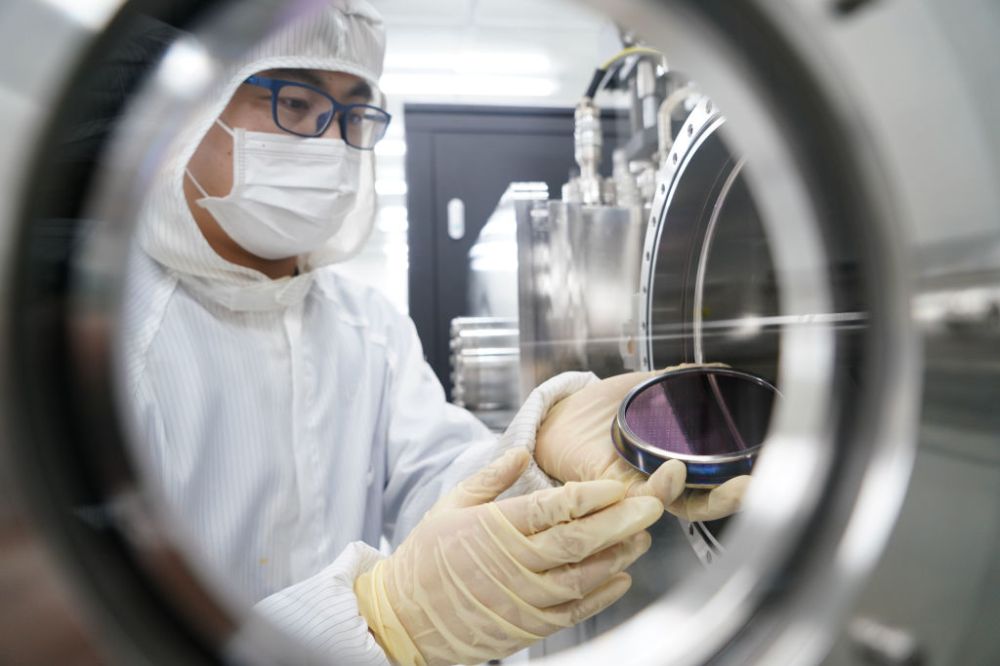Hello and happy Thursday!
China’s emergence as a global economic and technological power has been decades in the making, and it has been highly dependent on industrial and technological espionage. I’ve been doing some reading on the nation’s history of tech development and theft, and it turns out that technological dependency and espionage have been a feature of Chinese society for a very, very long time. However, we need only to review the country’s modern history to gain an appreciation for how central these activities are to China’s economic, social, and political development.
In the early 19th century, the nation suffered two major defeats at the hands of technologically superior foes—the West in the Opium Wars in 1842 and 1860 and Japan in 1895. Soon thereafter, Chinese leaders recognized that their very survival depended on their ability to modernize; but they understandably did not want to sacrifice their culture in these pursuits. As historian John Fairbank observes, China only wanted to “leap half-way into modernization,” and so the concept of ti-yòng was adopted in the reform era at the twilight of the Qing Dynasty.
The term ti-yòng is made up of two morphemes: tī, which means “essence,” and yòng, which means “practical use.” The idea is that China should put foreign technology and expertise to “practical use” while keeping the “essence” of its own culture. This idea persists today in the nation’s pursuit of various programs “with Chinese characteristics.”
In 1872, these dual aims were manifested in the Chinese Educational Mission, where 120 students between the ages of 12 and 15 were sent to the United States, placed with American families, and enrolled in prep schools before being sent to university. Less than a decade later, though, changes in American and Chinese attitudes led to the shuttering of the program before any student could graduate.
On the U.S. side, concerns about the number of Chinese immigrants led President Chester A. Arthur to sign the Chinese Exclusion Act in 1882—prohibiting the immigration of all Chinese laborers for 10 years. Students were exempted from the law, but its passage, along with growing anti-Chinese public sentiment more broadly, lessened the program’s appeal. Simultaneously, the Chinese government had growing concern that students were losing touch with Chinese culture and becoming completely Westernized. These doubts about loyalty prevented returning students from holding higher-level positions in government and industry, blunting China’s ability to harness their experiences. Three decades later, however, American attitudes changed once again, and things improved for China.
After an economic depression in the 1890s, American interest in foreign markets surged. At the time, the Chinese market was at risk of being fractured into several smaller markets, with each dominated by a different foreign trading partner—particularly Russia, France, Germany, and Great Britain. To help stop this—and to ensure its own access to China—the United States adopted its Open Door Policy, arguing for Chinese territorial and administrative sovereignty and for the equal protection of access for all nations trading with China. This approach enjoyed broad support among Americans and was a cornerstone of U.S. foreign policy for more than 40 years—once again opening technology sharing between the United States and China.
Around the same time, the United States also used funds from the Boxer Indemnity Program to provide scholarships for Chinese education in the United States. These funds were provided by the Qing Dynasty as payment for American assistance in putting down the Boxer Rebellion—a peasant-led rebellion aimed at expelling all foreign influence from China. These scholarships totaled millions of dollars and were massively successful, with beneficiaries going on to establish China’s rocket program or to become the first presidents of Tsinghua, Tianjin, and Shandong Universities. Unfortunately, the Cold War all but erased these gains.
Soon after assuming power and establishing the People’s Republic of China (PRC) in 1949, Mao Zedong adopted a policy of “leaning to one side” in the Cold War between the United States and the Soviet Union. Choosing the Soviets, China began mimicking many of the USSR’s programs, including a centrally managed national science and technology program. This program deemphasized research in universities and instead favored laboratories associated with the state’s Academy of Sciences. This approach was supposed to create an efficient flow of new technologies out of these national laboratories directly into industry, while ensuring the economic and military benefits were effectively realized and distributed. This approach also preferenced applied research over basic or theoretical research. And for a while, this program had significant success.
Not only did the Soviet Union send thousands of scientists and engineers to help Mao build his country’s technological base, but nearly 40,000 Chinese were sent to Russia to receive advanced training, including eventual leaders like Presidents Hu Jintao and Jiang Zemin, and Premier Li Peng. This cooperation, for example, was critical in the development of China’s nuclear weapons program.
This Sino-Soviet nuclear agreement was part of a 12-year plan to provide Russian expertise, designs, training, and support for Chinese uranium enrichment and other nuclear-related facilities, and it had a significant impact, even leading to the joint-development of other capabilities like aircraft and guided missiles. But by 1960, China had become so dependent on Russian expertise that growing tensions between Mao and Soviet leader Nikita Khrushchev threatened to end this effective partnership. This parting of ways came to fruition when tense political relations, competing priorities, and limited resources caused the Soviets to withdraw most of their experts from China and to dramatically reduce its technological aid.
As bad as this was, however, it was Mao’s own political mistakes in the wake of this withdrawal that ultimately devastated China’s technological capacity for decades. First, there was the “Great Leap Forward,” a social and economic policy between 1958 and 1962 that sought to transform the nation from an agrarian economy to a fully formed and modern communist society in just five years. Though riddled with faults, the fatal flaw in this program was its prioritization of communist commitment over technical expertise. This led the nation’s top science and technology institutions to be filled with, and led by, individuals who were loyal to the Communist Party but who had very little ability to fulfill the chairman’s aims. In the same way that political pressures led agricultural officials during this time to report farming “surpluses” while anywhere from 15 million to 55 million Chinese were starving, officials overseeing the nation’s scientific research were reporting fictional technological advancements while the nation’s actual research infrastructure and expertise withered. Four years later, things got even worse.
In 1966, Mao launched his “Great Cultural Revolution,” a social-political program aimed at purging the last vestiges of traditionalism and capitalism from Chinese society. Over the next 10 years, Chinese communists formed “Red Guard” and “rebel” groups around the country, harassing, beating, and even killing many of the nation’s scientific and cultural elites who were seen as “revisionists” and anti-communist. Local chapters of the Chinese Communist Party (CCP) even formed regional “revolutionary committees” that often split and went to war against each other—each accusing the other of not being sufficiently committed to the communist cause. On multiple occasions Mao had to deploy the Chinese military to quell these “violent struggles,” and thousands were killed.
All of this gutted many of the nation’s most important strategic research programs by plunging the country into political chaos and by condemning (and even killing) those with technical expertise or Western experience. During this time, Mao also recalled all Chinese scientists from overseas and did not allow students to go abroad again until 1978. Commenting on this in their excellent book, Chinese Industrial Espionage: Technology Acquisition and Military Modernization, scholars William C. Hannas, James Mulvenon, and Anna B. Puglisi observe the following:
To understand how devastating the Cultural Revolution was to Chinese S&T development, one need only look at the events at Qinghua University. Established through the Boxer Indemnity Fund, by the late 1960s the university had evolved into a successful place of higher learning with many of its faculty having received an overseas education and enrolling only students with the highest credentials. By contrast, after closing entirely during the first part of the Cultural Revolution, Qinghua reopened in 1970 to enroll a class of “worker, peasant, and soldier students.” The students arrived on campus with little formal education and on the recommendation of their political chain of command. Scholarship and academic achievement were waived. Similar follies took place at universities across the country.
Things did not begin to change until several years after Mao’s death in 1976. Following a humiliating military defeat at the hands of Vietnam in 1979, China again realized it must modernize to survive. In 1978, Deng Xiaoping instituted the “Boluan Fanzheng” reforms that dismantled most of the Cultural Revolution’s policies, and the National People’s Congress adopted the “Four Modernizations.” These programs once again aimed to make China a global power by the 21st century by investing in agriculture, industry, science and technology, and national defense. Here again Hannas, Mulvenon, and Puglisi provide valuable insight:
China enjoyed two advantages in its efforts to rebuild. First, unencumbered by existing plans and infrastructure—there were none—it could lay out a new foundation for growth that was supported by new technologies. Second, in the most striking change of heart of the century, the same China that had relied on Soviet support to counter the US in the 1950s could position itself to benefit from America's Cold War concerns by renewing its technological links and educational exchanges with the United States.
In the post-Mao era, foreign know how was seen as a catalyst to jumpstart China’s quest for capable military systems and industries and to build capacity for the future. The first wave of post [cultural revolution] students to go abroad tended to reflect this approach as well. They were older than even their American advisers and sought overwhelmingly to study some aspect of technology or hard science.
But even here, Chinese leaders remained concerned about the cultural effects of these engagements. “Sending out the students to foreign countries was never, for China, a matter of cultural exchange,” observes scholar Qian Ning. “The goal is to make China a strong country—a fact which the overseas students must face.”
By 1986, this reengagement with the West culminated in the National High-Tech Research and Development Program (aka “the 863 Program”) that was supposed to help the country “meet new global challenges and competition.” Overseen by the Ministry of Science and Technology (MOST), 863 focused on improvements in biology, space flight, information technology, lasers, automation, energy, new materials, and oceanography. This effort was later supplemented by the “Torch Program” aimed at improving high-tech commercial industries; the “973 Program” for basic research; and the “985 Project” and “211 Programs,” which emphasized university reforms. All these programs were predicated on sending Chinese researchers out to benefit from Western expertise but then eventually bringing them home to “serve in place.” And by any metric, these and related efforts proved hugely successful.
The modernization of China’s technological and industrial capacity allowed the nation to do the following in the 25 years between 1980 and 2015: Grow its gross domestic product (GDP) as percentage of the United States’ GDP from 7 percent to 61 percent; imports from 8 percent to 73 percent; exports from 8 percent to 151 percent; and reserves from 16 percent to 3,140 percent. As measured by purchasing parity, China has not only grown beyond the United States, but now accounts for more than 18 percent of world GDP, compared to just 2 percent in 1980. China is also transitioning from being the world’s fabricator of technologies to a legitimate cutting-edge innovator.
In 2015, China registered double the number of applications for patents in robotics, quantum computing, and other emerging technologies as the United States and, until recently, the country was on the cusp of surpassing the United States in total research and development spending. Considering these and other related trends, the American Academy of Arts and Sciences warned in 2014 that, “if our nation does not act quickly to shore up its scientific enterprise, it will squander the advantage it has long held as an engine of innovation that generates new discoveries and stimulates job growth.” Now, in any given year, China can have as many as nine of the world’s 20 largest tech companies.
Put simply: China is no longer a technological backwater. The nation has and is effectively using foreign technology and expertise to become a fountainhead of innovation. Critical to this achievement in the late 20th and early 21st centuries has been China’s unprecedented use of industrial espionage—particularly through cyber means. But we discuss those issues all the time and my main goal here was simply to review some of the most salient historical context to our current situation.
So, to summarize: China’s modern history demonstrates two persistent aims. First, the nation’s leaders have long recognized that modernization is critical for national survival. Even Mao’s “reforms,” as misguided as they were, were fundamentally aimed at transforming the country away from an ancient agrarian society and toward a modern communist utopia. But the second persistent aim of using foreign technological expertise without changing Chinese culture has frequently restricted progress, and at times has even caused the country to move backward. The last 70 years, though, have seen massive advancements in Chinese technological capabilities and now the nation even threatens to overtake the United States in some important and valuable technologies.
Understanding this background is helpful, even necessary, for properly understanding today’s challenges, and that’s why I wanted to share all of this with you. I’ll close with a final quote from Hannas, Mulvenon, and Puglisi:
The one feature that has been a central tenet of Chinese development from the later Republican to early Qing era through today is the active role of the government in facilitating China’s “catch-up” to ensure China benefits from its interactions with the West and also to set the terms of those interactions to achieve goals determined by the state. Chinese students are sent out to learn with a purpose, and its business and S&T collaborations are a zero-sum game, with the goal being China “winning” and meeting strategic goals.
That’s it for this edition of The Current. Be sure to comment on this post and to share this newsletter with your family, friends, and followers. You can also follow me on Twitter (@KlonKitchen). Thanks for taking the time and I’ll see you next week!






Please note that we at The Dispatch hold ourselves, our work, and our commenters to a higher standard than other places on the internet. We welcome comments that foster genuine debate or discussion—including comments critical of us or our work—but responses that include ad hominem attacks on fellow Dispatch members or are intended to stoke fear and anger may be moderated.
With your membership, you only have the ability to comment on The Morning Dispatch articles. Consider upgrading to join the conversation everywhere.